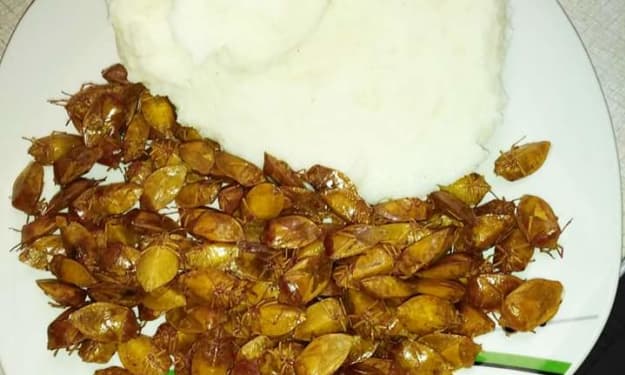Southeast Asia's 600-year-old fusion cuisine
Six hundred years ago, women created Peranakan cooking – a Southeast Asian cuisine with multicultural roots – and have been shaping it ever since.

When Elizabeth Ng was seven, her hideout wasn't the local playground or her bedroom, but the kitchen tucked at the back of a single-storey timber house in a beachside kampong (village) facing the Malacca Strait.
Ng grew up in Malacca, Malaysia, and was raised by her maternal grandmother, living with her four siblings and 15 cousins while her parents travelled around Southeast Asia as salespeople. After school ended for the day, she would go home, finish her homework and be beckoned into the kitchen with the other girls. The tasks were menial but had to be handled delicately, like carefully slicing fresh makrut lime leaves or dodging splashes of burning gravy or syrup while stirring a pot of curry or pineapple jam over a flame.
Peranakan cooking, a Southeast Asian cuisine with multicultural roots, created and popularised by nyonyas (Peranakan women), is often labour-intensive and time-consuming. Sometimes it takes several days to prepare one dish. Take ayam buah keluak (chicken and black nuts stew) for instance. The buah keluak, a nut native to Malaysian and Indonesian mangroves, has to be soaked in water for three to five days, changing the water every day, before extracting the black paste inside the nuts.
The women in Ng's family would also clean and cut whole fresh chickens, and use a mortar and pestle to pound ingredients such as turmeric, lemongrass and shallots to make a rempah (spice paste). But Ng enjoyed the work, even when her grandmother chided her if there was a burnt smell coming from the pot. "I learnt to be meticulous and patient," Ng said.

Her grandmother had mastered cooking under Ng's great-grandmother, who had learned from her great-great-grandmother. "It was always mothers," Ng said.
Now living in Singapore, Ng is passing on the secrets of her family recipes. "Whenever I cook, it brings back memories of spending time in the kitchen with my grandmother." On weekends, the financial services executive holds classes at her home, teaching eager adults how to make appetisers, gravies, dips, desserts and snacks, from the aromatic nasi ulam (a rice salad with mixed herbs) to a melt-in-your-mouth kueh salat (a cake made with glutinous rice and pandan custard).
Whenever I cook, it brings back memories of spending time in the kitchen with my grandmother
Peranakan food is known to be colourful and chockfull of local herbs and spices that give the eye-catching dishes their complex flavours. They can be spicy, salty and slightly sweet at the same time, like babi pongteh (pork braised with fermented soybean gravy); or sour, spicy and bursting with umami such as ikan asam pedas (spicy tamarind fish). Since most dishes require the ingredients to stew for long periods of time, all their flavours are released into the gravies, creating a tasty, indulgent mixture you can pour over rice or noodles, or dip your bread into.

Desserts come in vivid shades of green, brown, yellow and blue – all dyed naturally using ingredients such as pandan leaves, gula melaka (palm sugar), turmeric and blue pea. For example, when making apom berkuah (rice flour pancakes), a few drops of blue pea tea are added to the batter and swirled to give each pancake a pretty blue spiral.
Unique to Malaysia, Singapore and Indonesia, Peranakan food originated around the 15th Century. It is often considered one of Southeast Asia's first fusion cuisines, mixing Malay, Chinese, European and Indian influences.
Men from South India, China and Europe – many of them single – had sailed to Southeast Asia in search of riches from sea trade. Some of them settled in the port cities of Malacca, Penang and Singapore along the Malay Archipelago, and started families with the local Southeast Asian women. Descendants of these blended families were called Peranakan, which means "local born".
Under a patriarchal system, the women were in charge of the home. They cooked in a style they had learned from their Malay and Indonesian mothers: lots of stews and curries cooked in a plethora of local herbs and aromatics – lemongrass, blue ginger, pandan leaves, to name a few – which helped to preserve the food in a tropical climate without refrigeration, said Lee Geok Boi, author of In A Straits-Born Kitchen and other cookbooks.

But they blended their food and cooking styles with ingredients introduced through trade. South Indian traders brought spices like coriander and cumin; while chillies were brought by the Portuguese after they captured Malacca in 1511. And some Malay-style dishes were tweaked to include pork (which the local Muslims would not eat) and Chinese ingredients that travelled well, such as pickled vegetables, dried mushrooms and shrimp, taucheo (fermented soybean paste) and soy sauce.
"The local wives transformed [traditionally Chinese] dishes into babi pongteh [braised pork stew] and mah mee [stir-fried seafood noodles], which were more robust and varied than the original Fujian [a province in south-eastern China] dishes," said Violet Oon, a Peranakan chef who runs several eponymous restaurants in Singapore such as National Kitchen by Violet Oon Singapore and Violet Oon Singapore at Jewel.
Peranakan culture reached its zenith in the late 19th and early 20th Centuries before the Great Depression and World War Two. The British had colonised what was then called Malaya, and the Peranakans became a bridge between the colonial settlers and newer immigrants from countries like China and India. The Peranakan community learned English, embraced Christianity and amassed wealth as bureaucrats and business owners.

Many elite Peranakan families employed servants. With more spare time, the wives were able to cook and experiment in the kitchen. "It was the combination of innovation, wealth and openness that led to an amazing fusion cuisine," said Dr Lee Su Kim, a sixth generation nyonya who has written fiction and nonfiction books about Peranakan culture.
It was the combination of innovation, wealth and openness that led to an amazing fusion cuisine
Though Peranakan girls were among the first females to be educated during this period, domestic skills like cooking were still an essential part of their upbringing – it was a matter of pride that they learned to cook in preparation for marriage.
Oon said mothers of young men of marriageable age would visit friends who had daughters around the same age to hear the sound of the girls pounding spices in the kitchen with their mortar and pestle. If her pounding sounded correct, the girl was believed to be able to cook well.

"It's not just about taste, but also colour, variety and finesse in presentation," said Lee Su Kim. Kueh (cake) had to be carefully cut into small diamond shapes with a serrated knife, displayed neatly on fine porcelain, when guests came, for example.
After World War 2, the idea that women had to be domestic goddesses gradually faded away. A growing embrace of feminism meant that some younger women deliberately avoided the kitchen.
Oon, for example, said her mother, a secretary, never learned to cook until much later in life. "It was like a badge of honour for my mother to say that she could not even boil an egg," she said. But as a teenager, worried she wouldn't be able to taste her favourite dishes when her aunts got older or passed on, Oon decided to learn to cook the Peranakan dishes she loved as a child.
But not all women snubbed cooking. In fact, it was women who popularised the cuisine among the masses. Some Peranakan women taught cooking classes between the 1950s and '80s to earn money. Before that, in the 1930s, Peranakan recipes began to appear in cookbooks, said Geok Boi. In 1931, The YWCA of Malaya Cookery Book was the first local cookbook to be published and featured several Peranakan recipes like pork sambal (spicy pork), hati babi bungkus (pig liver balls) and vindaloo (spicy meat curry), alongside other recipes.

The first cookbook to label itself Peranakan was Mrs Lee's Cookbook: Nonya Recipes and Other Favourite Recipes. It was self-published in 1974 by Chua Jim Neo (also known as Mrs Lee Chin Koon after she married), the mother of Singapore's first prime minister Lee Kuan Yew. Another cookbook that popularised Peranakan cooking was My Favourite Recipes by Ellice Handy, a science teacher who had it published in 1952 to raise funds for the Methodist Girls' School in Singapore, where she taught. The book is still in print.
As a Peranakan and a woman, it gives me ultimate pleasure to be still performing the duties of pleasuring the taste buds
Today, women across the Malay archipelago are showcasing their talent and skill in well-known Peranakan restaurants, from Nancy Goh's Nancy's Kitchen, a stalwart in Malacca since 1999, to Annette Tan, who spearheads Peranakan private dining venue Fatfuku.
"As a Peranakan and a woman, it gives me ultimate pleasure to be still performing the duties of pleasuring the taste buds," Oon said. "For a woman – cooking food is not only about deliciousness... food is the very essence of providing life."

Nevertheless, being able to cook Peranakan food is no longer an identity marker for women. Many babas, or Peranakan men, are also cooking it and some of them helm restaurants today, such as Malcolm Lee and his one Michelin-starred restaurant Candlenut in Singapore, and MasterChef Singapore judge Damian D'Silva, who runs Rempapa also in the city.
Six-hundred years on, Peranakan continues to endure and evolve. Whether served in restaurants or in the home, for modern-day Peranakans, the delicious recipes passed down over generations are a reminder of their rich, intricate heritage and the connection they have over family meals.
"It's such a beautiful and unique part of the culture you don't want to lose," said Lee Su Kim.
About the Creator
Many Ma Lan
Learning to make progress next time is an effective rule for being bigger than you are. Therefore, never let yourself sleep on the hotbed of success you already have.






Comments (1)
Cooking is also a discipline